
Electric Car Conversations: The good and the challenges
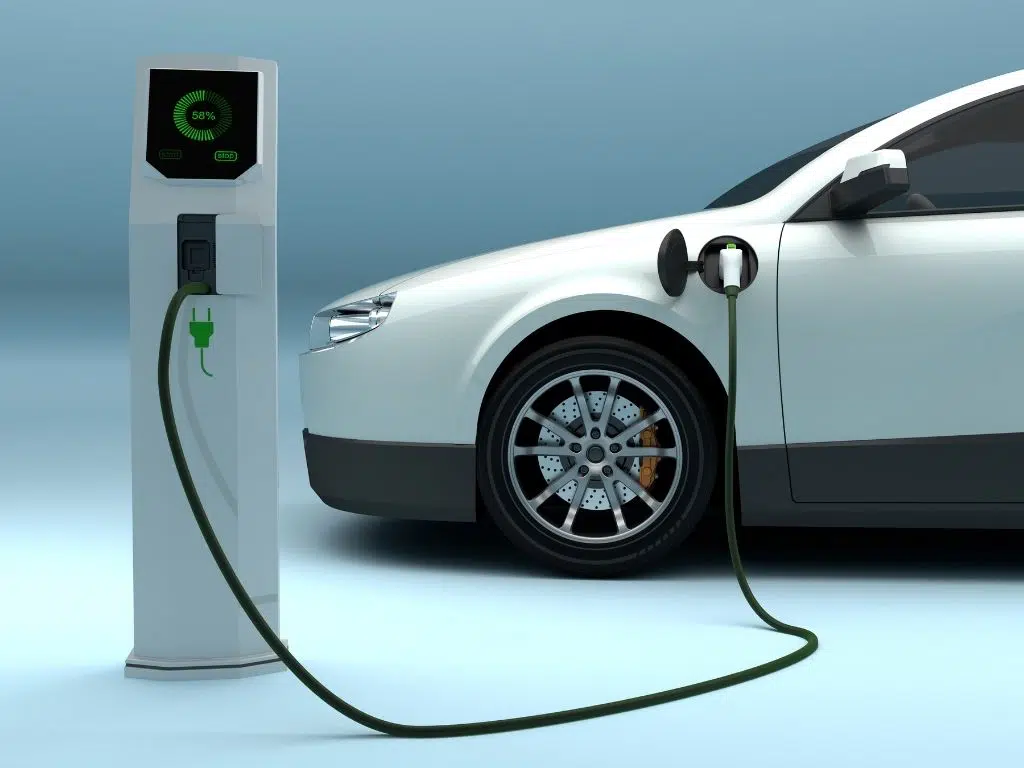
Contents
Electric car owners: Electric or Dogmatic?
As we are all aware, there are numerous considerations while purchasing a car, such as its appearance, price, functionality, safety, and many more. However, electric vehicles (EVs) and plug-in hybrid vehicles (PHEVs) have their own hurdles. Where do they rank in terms of other cars? How can you make your car the most energy-efficient one you can afford?
The good news is that there is a fantastic community of owners who share almost everything about driving electric cars on the grid.
Team Mission Sustainability recently went on a long-distance drive along with a community of electric vehicle enthusiasts. These early adopters of electric cars shared with us all about electric cars: the good and the challenges.
So if you’re researching about electric vehicles and want a front-row seat, then fasten your seatbelts and enjoy a ride with us as we travel through the Karnataka interstates.
On November 13, 2022, a group of electric car owners and enthusiasts began their journey from Whitefield, Bangalore, to explore the Laxminarasimha Nuggehalli temple. Known as Nuggihalli or Nuggelli, it is situated in the Hassan district of the Karnataka state in the Channarayapatna taluk. A commander in the Hoysala Empire under King Vira Someshwara’s authority, Bommanna Dandanayaka constructed the Lakshmi Narasimha shrine in 1246 CE. It is a fine example of Hoysala architecture from the thirteenth century.
The explorers set off at five in the morning, and they arrived at their target at three in the afternoon. Electric automobiles were used throughout the entire journey. The trip was jam-packed with intelligent, perhaps nerdy conversations, enjoyable music, and delectable meals. An event like this in the community gave a thorough and pragmatic introduction to electric automobiles.
Amongst the owners was Mr Ganesh Shanbagh, whom we’ve previously interviewed on Mission sustainability. Ganesh has been working and residing in Bengaluru for the past eleven and a half years. He is working full-time as a software engineer in the product development team of Dialpad and following his passion for conserving the water of Bengaluru on the weekends. Along with him were other EV owners, namely: Ganesh Shanbagh, Anil Karat, Vivek Narayan, Somashekhar Boregowda, Naveen Kumar, Rupan Roy, Akhil Krishnan and Prakash Mahale.
The 160-kilometer trip was as seamless as it could be, with too few stops for a charge. Our entire squad of EV owners have been operating for more than a year. The majority of the learning took place through conversations on WhatsApp groups with other EV aficionados as dealership men weren’t much of a help. With regard to their needs, this assisted them in making the best choice.
Before moving on further, let’s check how’s the EV market doing in India and overall
Current state of the EV Market
Road transportation, which is responsible for 16% of world emissions, could be carbon neutral using electric vehicles as the primary technology.
Despite supply chain snags and the ongoing Covid-19 epidemic, electric car sales hit a new high in 2021. Sales increased by almost double to 6.6 million from 2020, representing a sales share of about 9%, increasing the total number of electric vehicles on the road to 16.5 million. (source)
Three different kinds of electric vehicles exist: battery-powered, hybrid, and plug-in hybrid. Also, while they cost a little more than gasoline-powered counterparts, electric vehicles don’t need regular engine oil changes.
There are three categories according to type: fuel cell electric vehicles, battery electric vehicles, and plug-in hybrid electric vehicles (FCEV). Two-wheelers, passenger cars, and commercial vehicles make up the different vehicle categories.
Discover products and services in sustainability
Have a look at the products and services available near you
Why EV over traditional automobiles?
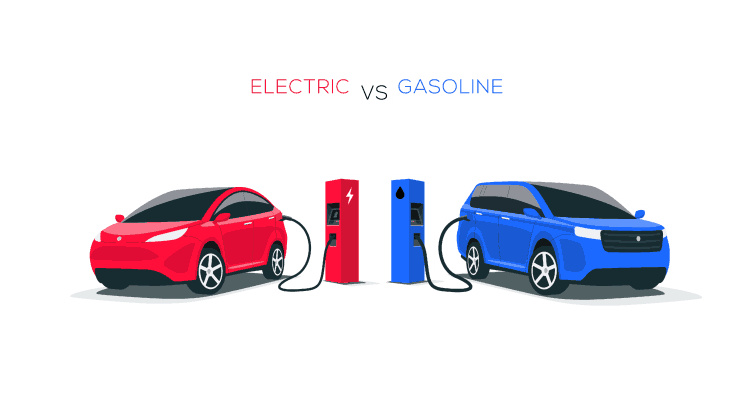
Due to several technical developments, EVs are becoming more popular. Higher fuel efficiency, minimal maintenance costs, ease of home charging, a better ride, and decreased engine noise are all advantages over traditional automobiles.
When compared to a gas-powered car, an electric vehicle transfers over 50% of the electrical energy from the grid to power at the wheels, while the latter only translates roughly 17%–21% of the energy stored in fuel.
As people are becoming more aware about the effects of using non-renewable resources, EVs are taking a hit. The electric vehicle market is projected to reach $823.75 billion by 2030. (source)
What’s new in the EV Market
The electric vehicle market is dynamic and ever-changing. With respect to new technologies being developed every day, the EV market demands innovation. As the industry is still fragile, it depends on new and better technology, especially when it comes to batteries.
- Present-day electric vehicles can go twice as far! Since the beginning of the year, the energy density of batteries for EVs has increased, and some of the best battery cells can now achieve energy densities of over 300 Wh/kg, up from roughly 100-150 Wh/kg a decade ago. This is all because of ongoing changes to the composition and engineering of batteries.
- Use of LFP cathodes doubling: Lithium iron phosphate (LFP) cathodes, which don’t need nickel or cobalt, have seen their market share double over the previous year. This is partly owing to cutting-edge cell-to-pack technologies that enable higher pack densities by lowering pack dead weight, but primarily because manufacturers switched to LFP to lessen their risk of volatility in commodity prices.
- CATL announcement: The biggest battery maker in the world, CATL, recently announced significant supply chain development for sodium-ion batteries. Certain metals could potentially never again be used because of this technique.
- Toyota: encourages the conversion of older vehicles to zero emissions. This is accomplished by merely equipping existing vehicles with better internal combustion engines and electric motors.
- FedEx India: To further the environmental aim of zero emissions last-mile distribution in India, the transportation giant FedEx Express (FedEx) recently deployed 30 TATA Ace EVs in Delhi.
- Tesla Gigafactory 2: At Gigafactory 2 in New York, Tesla started producing solar cells and modules in 2017. Tesla developed additional production lines in 2019 to support electrical components for its power storage and supercharger technologies.
Apart from the above-given innovations, many major automaker companies have declared their electrification goals. These involve companies like BMW, Volvo and many more.
Global efforts on improving the EV market
Globally a lot of work is being done in the electric vehicle market. China had the most sales in 2021 with 3.3 million (tripling 2020 sales), followed by Europe with 2.3 million (up from 1.4 million in 2020) sales. The share of the market of electric vehicles sold in the US doubled to 4.5% in 2021. (source)
- One of the notable initiatives was COP26, where more than 100 stakeholders, such as governments, automobile companies, investment firms, financial firms, and fleet proprietors and operators, signed a proclamation to hasten the transition to 100% zero-emission cars and vans globally by 2040, and by no later than 2035 in leading markets.
- 15 nations (representing around 5% of the world’s sales of medium- and heavy-duty vehicles) declared their support for the Global Drive to Zero Campaign and Program in 2021.
EV Market in India
The Indian EV market, which was estimated to be worth $1,435 billion in 2021, is [predicted](https://yourstory.com/2022/09/lessons-from-indian-electric-vehicle-ev-mobility-market#:~:text=According to reports%2C the Indian,and EVs fit the bill.) to grow by 47.09% between 2022 and 2027 to reach $15,398 billion.
If these numbers aren’t enough, then there is more.
If compared globally, India is still lagging behind when it comes to electric vehicles. But its market is not as small as one can predict. Take a look at the state-wise distribution of EV sales.
*Source: EV reporter, retrieved from: https://www.ibef.org/blogs/electric-vehicles-market-in-india*
When it comes to electric cars, the India market is dominated by Tata Motors. Only the Nexon EV and Tigor EV are offered by Tata Motors, the market leader with an 88% market share. Due to their price range, both vehicles appeal to a specific market, and EVs are already viewed as pricey in India. The Tiago EV, which has a base price of Rs. 8.49 lakh, is now the cheapest electric car available in India.
How is India boosting the EV market?
By 2030, the Indian government wants to have only electric vehicles on the road. But one of the essential conditions for ensuring the adoption of electric vehicles is the development of a strong electric vehicle infrastructure.
To move forward with this goal, the GOI is making several efforts to boost the electric vehicle market. With the implementation of the FAME I and II schemes, the improvement of the e-charging network, the decrease of the Goods and Services Tax (GST) on EV sales, and the provision of subsidies of Rs 10,000 crore, the government of India has given EV companies a massive benefit.
Adoption of EVs requires a comprehensive facility for charging. The NITI Aayog published a proposed battery switching policy in this regard on April 22, 2022, and it will be in effect until March 31, 2025.
Section 80EEB of the income tax provides a tax exemption of up to Rs. 1,50,000 ($1,960) when financing the purchase of an EV.
The e-AMRIT platform was introduced by India at the Glasgow COP26 Summit. The webpage seeks to serve as a one-stop shop for all data on EVs, including info on charging points, EV funding choices, and news on investment options, public regulations, and grants.
Did You Know
Delhi receives the highest amount of subsidies in the EV market. This amounts to 100 crores.
What’s coming for the Indian EV market?
By 2030, NITI Aayog wants to see sales uptake for electric vehicles reach 70% for all commercial vehicles, 30% for private vehicles, 40% for buses, and 80% for two- and three-wheelers. This seems to be consistent with the target of achieving net zero carbon emissions by the year 2070. The Ministry of Heavy Industries reports that 0.52 million electric vehicles (EVs) have been registered in India in the last three years.
BYD X India
By 2030, BYD wants to control 40% of the Indian EV market.
Overcoming challenges, BYD, a Chinese EV behemoth, has made inroads into over half of the Indian market. BYD, funded by Warren Buffett, wants to treble its dealer network in India this year and will introduce its third passenger electric vehicle there by the fourth quarter of this year. In just one year, BYD India’s connectivity had grown to 24 showrooms spread over 21 cities. The business continued and now wants to quadruple its presence to 53 showrooms this year.
What's troubling the EV market in India
- Another issue is awareness. Likewise, domestic brands must do a better job in presenting the practical applications of electric vehicles and outlining their perceived value to buyers.
- India’s reliance on China for parts, notably batteries, is one barrier holding back the country’s transition to EVs. Local automakers’ lack of authority over the quality of parts raises questions about how secure electric vehicles will be on India’s scorching, bumpy roads.
- Another difficulty is the paucity of alternative offerings and technologies. In five years, when customers will have more options, Rajesh Jejurikar, executive director of Mahindra, anticipates that EV usage in India will increase significantly.
Busting myths about the charging stations
With around 85% of fast chargers and 55% of slow chargers available to the general public worldwide, China continues to hold the top spot in terms of the number of publicly accessible chargers.
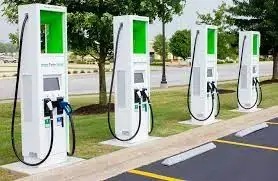
Due to the numerous commercial and public organisations building charging infrastructure in various locations around India, the EV charging station sector in the country is quite fragmented. In the next two years, the West Bengal government intends to deploy 1000 electric vehicle charging stations around the state. This is a response to India’s lack of infrastructure for EV charging.
However, many states like Tamil Nadu and Kerala are already EV equipped by deploying a number of charging stations around the state. Zeon charging stations are famous in Southern India. Founded in Tamil Nadu, Zeon is one of the fastest-growing providers.
A collaborative analysis by the Indian Venture and Alternate Capital Association (IVCA), Induslaw, and EY predicts that by 2027, there will be 100,000 charging stations, which would be able to meet the demand from the anticipated 1.4 million EVs on the road.
Even though fast charging solutions are on a rise, slow charging services will also be increased due to an increased demand of two-wheeler electric vehicles.
Click here to view the list of number of charging stations in Indian states and highways.
Electric car conversations: Straight from the owners
“Karnataka receives a lot of sunlight. Even if it’s less in comparison to Rajasthan and other states, the scope of using solar power is huge.”
Anil, Head of Technology at Voiro, mentioned how he only needs to charge his electric vehicle in 3 or 4 days during the night. He mentioned how charging the vehicle on weekends is a boon due to the availability of solar power.
Similarly he also mentioned how the sunlight in Karnataka is going to increase in the upcoming years which leaves us which an abundance of scope. Hence, it is only efficient to invest in a car which can make use of the resources efficiently. He provided us with insight on how using petrol cars in a bane to the environment and the economy. Even if you run a car on coal, it will give you an efficiency of 50% in comparison to a petrol car which only provides 20%. Hence, from a sustainability point of view, investing in an electric vehicle is the best way to move forward.
But it’s hard to convince someone to buy an electric car just because it is “good for the environment”.
It’s hard to convince someone to buy an electric car just because it is “good for the environment”.
Other reasons to invest in an electric car:
Instant torque: Right from the beginning, Electric cars are appreciated for the instant torque. This means, torque is provided right from zero rpm. This is one of the main reasons why driving an electric car is an experience on its own. The party trick is the acceleration. Vivek Narayan, businessman, mentioned his experience of test driving an electric car for the first time blew his mind with the instant torque. It drives pretty smooth compared to all other cars in the market making your highway rides much easier and more comfortable.
Stability: Compared to a petrol car, electric cars are more stable. This is because all the weight of the car is located in the bottom, thanks to the batteries. This makes the car weighted and more stable to drive.
Cost: one of the main benefits of investing in an electric car is the cost. The convenience is huge. From charging your vehicle at your home to cutting down on petrol costs. Anil revealed how driving an electric vehicle saves Rs. 6 per kilometre. Which is huge. Vivek Narayan mentioned how he earlier used to spend around Rs. 40,000 on petrol every month which is now reduced to Rs. 5000 of the electricity bill. “I charge at home once or twice a week and that’s it.” Mentioned Vivek.
Subsidies: Anil Karat, Head of Technology at Voiro, mentioned how the showroom price of his car was 20.8 Lacs and he paid 21.8 Lacs for the car in hand. This meant the road tax was completely exempted. On the contrary, petrol car owners need to pay a road tax of 3.5 to 4 lacs. Other than that, the state governments provide subsidies in terms of tax waivers or other subsidies. Check here.
Safety: A lot of discussion has happened on the safety of the electric cars. Most of the concerns in the Indian market rise because of the lack of awareness about the technologies used in the electric vehicles. Anil Karat talked about how manufacturers design the batteries to ensure the safety of the passenger.
The truth about electric car batteries.
Do You Know?
China manufactures more than 75% of the world’s lithium cells, and its lithium deposits are around 30 times greater than those of the US. (source)
The major players in the battery market are Panasonic (which is the largest supplier of Tesla) and Chinese companies like CATL and BYD. In fact only these two businesses alone make the Chinese market dominant in the EV world.
However, the common people like you and me have always questioned the ever evolving battery and charging systems of electric cars. Well, the only way to get a clearer picture is to know the real story by real people.
Most of the people we interviewed during our electric car getaway, own an electric car since a year or more, making them the perfect candidate.
How batteries are designed for safety?
The temperature of batteries used in electric cars are always monitored. This ensures active cooling. This is really helpful when you’re charging the vehicle or driving at a high speed, when the batteries require cooling.
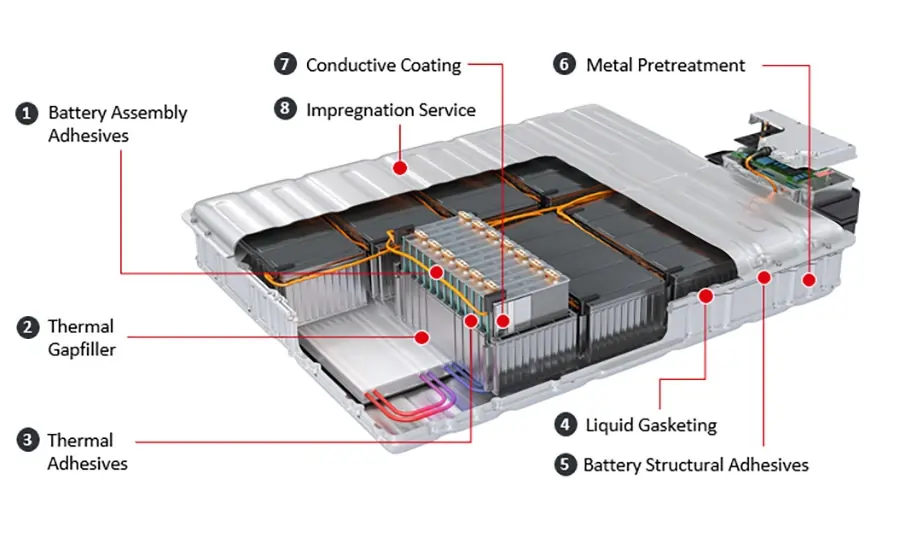
Secondly, the main systems of the electronic car are controlled by another battery. This is not the case with electric scooters. These batteries are contained in waterproof boxes which provides no harm to the car even in cases of flood.
With the upcoming innovations, batteries like LFP (lithium iron phosphate battery) are circulating in the market with higher efficiency. Anil mentioned how his car uses NMC (Lithium-Nickel-Manganese-Cobalt-Oxide) battery but the new cars have LFP batteries installed which are more sustainable. Other batteries like plate batteries, BYD batteries are also new innovations which have different benefits. As the electric vehicle industry is still young and fragile, the battery chemistry keeps evolving.
However, it is not rare to find software issues or bugs in batteries. You can find them in LFP batteries, Tata Nixon batteries and even Tesla batteries. As the industry is fragile and innovations are still happening in the garages, you might have to deal as you go.
Highways and Battery performance:
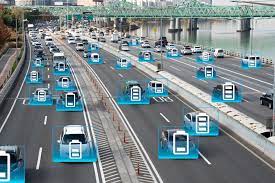
“In Bangalore, a battery performs differently than it does in Delhi. Therefore, the next ten years will be more illuminating.” Said Anil.
When it comes to driving on highways, people look for quicker charging. What people usually don’t consider is how many kilometres one can add in a half an hour break. Let’s say if a car has a 50kWh charger, then stopping for 45 minutes can get you 200km worth of charging. This would add up to the number of stops you would usually require in a petrol car.
Another thing to consider is how to get the best out of your battery. Charging your battery fast does some damage to your cars’ battery. Hence, to reduce pressure on the grid, slow charge your vehicle whenever it is possible.
Anil also suggested how having an adjustable charger can add to the benefit. Usually the charging capacity provided by the companies are a little too much say, 3-7kWh from a regular charger. When I reality, you don’t even need that much. Having an adjustable charger, say which charges at 1kWh reduces the pressure on the grid.
“Your phone is sufficiently charged”. IPhone users know what I’m talking about.
Just like our phone batteries, our car batteries also have an optimal level of charging. Once you figure it out (depending on the battery chemistry), the best way is to charge only up to that level. If your car is giving you efficiency at 90% of charging, then go no further. Over charging, over a span of time, can have effects on your car’s battery life.
Is making batteries a resource-intensive process?
Many might argue that electric cars might not be sustainable after all. Conversations spark about how the battery manufacturing process is not very environmentally friendly.
Yes, the process of making batteries can be resource-incentivized, but it only happens once and only requires a single extraction. Whatever lithium you remove now can be used forever; you cannot discard it. You should always be able to use it after you extract it. Lithium cannot be used and thrown away due to its high manufacturing costs and high cost of development from new resources.
Snippets from our conversations
If you’re still giving a second thought on buying an electric car, then we need are here to give you some real snippets from our real conversations.
We asked Ganesh, what message he has for the people who’re thinking to buy an electric vehicle.
“Consider going electrical if your budget is between 20 and 30 lacs. If not, you will be switching off a pleasant experience. If your budget is lower than that, you may need to make some concessions, such as delayed charging and other things. A sweet spot is between 20 and 30 lacs. In the past year, I personally travelled more over 20,000 km, so if you enjoy long-distance driving, this is a great option.”
Why did Anil choose an electric car?
“I realized how all the cars were becoming expensive. I wanted by new car to drive smooth and have more power. Safety was also a concern. The only car which satisfied all my needs was XUV300. I randomly shortlisted this car and I drove it, and it was so much better than other cars. I wanted a low driving cost and wasn’t really concerned about sustainability back then. Many people stick to a budget, and that’s why we have such cars which provide no safety. As we are okay with compromising our safety, car companies don’t hesitate to push cheap cars. Although these cars have numerous benefits, electric cars are still a gamble unless you’re a little open to trying something new and adventurous.”
Final Verdict On Electric Cars
We can’t deny that electric cars are a bang for the buck. Not only they give you the smoothest ride possible, they even decrease your overall cost by a huge amount.
Indian express wrote how electric cars are becoming so powerful that manufacturers are demanding purchasers to make deposits months in advance. The evolving industry of electric vehicles have been coming up with new innovations like crazy.
What’s coming next?
Nio, a Chinese automaker, created swappable EV batteries to allay customers’ concerns about running out of power and shorten the amount of time they must wait for the car’s battery to recharge. Since switchable vehicle batteries have been developed, buyers may drive in, have their battery changed quickly, and then drive away with a strong, fully charged car battery.
This is a classic example how the next few years for the electric car market is going to skyrocket. If you’re capable of seeing beyond the upfront cost, then EV can be a very valuable asset to you. However, if you want to get to know more about electric vehicles and which car to buy, joining an EV community is a good idea. These communities assist you make informed decisions on electric vehicles by educating you on technology, terminology, and realities. You can’t be uninformed about EVs; you need to be tech savvy.
It’s time for you to be Revolutionized.
Join our monthly newsletter for inspiring stories
Recent Blogs


Making mega cities water sustainable

